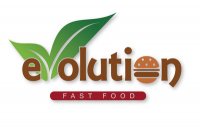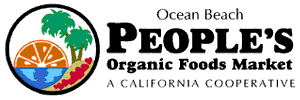Why go Veg?
For the Environment
Meat and the Environment
America’s meat addiction is poisoning and depleting our potable water, arable land, and clean air. More than half the water used in the United States goes to animal agriculture, and since farmed animals produce 130 times more excrement than the human population does, this waste is hastily and poorly stored, and the run-off from their waste (caused by rain, floods, and cleaning the feed lots) greatly pollutes the waterways that are left.

A 2006 United Nations report summarized the devastation caused by the meat industry by calling it "one of the top two or three most significant contributors to the most serious environmental problems, at every scale from local to global." The report recommended that animal agriculture "be a major policy focus when dealing with problems of land degradation, climate change and air pollution, water shortage and water pollution, and loss of biodiversity."1
Another United Nations report found that the meat industry produces more greenhouse gases than all the SUVs, cars, trucks, planes, and ships in the world combined.
Producing a pound of beef causes far more greenhouse gas emissions and other pollution than driving for 3 hours while leaving all the lights on back home.
Many people who are trying to help reduce global warming by driving more fuel-efficient cars and using energy-saving light bulbs could do much more simply by reducing meat consumption.
Reducing meat consumption is the single most effective thing you can do to reduce your carbon footprint.
If every American skipped one meal of chicken per week and substituted vegetarian foods instead, the carbon dioxide savings would be the same as taking more than a half-million cars off U.S. roads. The University of Chicago reports that going vegan is 50% more effective than switching to a hybrid car in reducing greenhouse gas emissions.
Wasting Food and Energy
Raising animals for food is grossly inefficient, because while animals eat large quantities of grain, they only produce small amounts of meat, dairy products, or eggs in return. This is why more than 70 percent of the grain and cereals that we grow in this country are fed to farmed animals. It takes up to 16 pounds of grain to produce just one pound of meat, and even fish on fish farms must be fed 5 pounds of wild-caught fish to produce one pound of farmed fish flesh.17, 18 All animals require many times more calories, in the form of grain, soybeans, oats, and corn, than they can possibly return in the form of animal flesh for meat-eaters to consume.
The world's cattle alone consume a quantity of food equal to the caloric needs of 8.7 billion people—more than the entire human population on Earth.19
E, the respected environmental magazine, noted in 2002 that more than one-third of all fossil fuels produced in the United States are used to raise animals for food.20 This makes sense, since 80 percent of all agricultural land in the U.S. is used by the meat and dairy industries (this includes, of course, the land used to raise crops to feed them).
Simply add up the energy-intensive stages: (1) grow massive amounts of corn, grain, and soybeans (with all the machines required for tilling, irrigation, crop dusting, and so on); (2) transport the grain and soybeans to manufacturers of feed on gas-guzzling, pollution-spewing semis; (3) operate the feed mills (requiring massive energy expenditures); (4) transport the feed to the factory farms (again, in inefficient vehicles); (5) operate the factory farms; (6) truck the animals many miles to slaughter; (7) operate the slaughterhouse; (8) transport the meat to processing plants; (9) operate the meat-processing plants; (10) transport the meat to grocery stores; (11) keep the meat refrigerated or frozen in the stores, until it's sold. Every single stage involves heavy pollution, massive amounts of greenhouse gases, and massive amounts of energy.
Wasted Resources
Vast tracts of land are needed to grow crops to feed the billions of animals we raise for food each year. Of all the agricultural land in the U.S., nearly 80 percent is used in some way to raise animals—that's roughly half of the total land mass of the U.S.10 More than 260 million acres of U.S. forest have been cleared to create cropland to grow grain to feed farmed animals.11
According to scientists at the Smithsonian Institute, the equivalent of seven football fields of land is buldozed every minute to create more room for farmed animals.12
In the United States and around the world, overgrazing leads to the extinction of indigenous plant and animal species, soil erosion, and eventual desertification that renders once-fertile lands barren.13

Between watering the crops that farmed animals eat, providing drinking water for billions of animals each year, and cleaning away the filth in factory farms, transport trucks, and slaughterhouses, the farmed animal industry places a serious strain on our water supply. Nearly half of all the water used in the United States goes to raising animals for food.21
It takes 5,000 gallons of water to produce 1 pound of meat, while growing 1 pound of wheat only requires 25 gallons.23 A totally vegetarian diet requires only 300 gallons of water per day, while a meat-eating diet requires more than 4,000 gallons of water per day.23, 24

You save more water by not eating a pound of beef than you do by not showering for an entire year.25
1 H. Steinfeld et al., Livestock's Long Shadow: Environmental Issues and Options, Livestock, Environment and Development (2006).
10 Vesterby and Krupa.
11 Earth Talk, "The Environmental Beef With Meat," The Bay Weekly, 6 Jan. 2005.
12 Smithsonian Institution, "Smithsonian Researchers Show Amazonian Deforestation Accelerating," Science Daily Online, 15 Jan. 2002.
13 Danielle Knight, "Researchers Highlight Overgrazing," Terra Viva.
14 Jennifer Bogo, "Where's the Beef?" E, Nov. 1999.
15 Robbins, p. 250.
17 Mark Gold and Jonathon Porrit, "The Global Benefits of Eating Less Meat," 2004, p. 22
18 Robbins, p. 298.
19 Gold and Porritt.
20 Motavalli
21 Robbins, The Food Revolution, p. 238.
22 Robbins, The Food Revolution, p. 236.
23 Robbins, Diet for a New America, p. 367.
24 Frances Moore Lappé, Diet for a Small Planet, Ballantine Books: New York,1982.
25 Robbins, The Food Revolution, p. 236.
Yes! I
want to eat better,
feel better, stop supporting
cruelty to animals raised
for food, and help protect
the planet. I pledge to explore vegetarianism
for veg week!
feel better, stop supporting
cruelty to animals raised
for food, and help protect
the planet. I pledge to explore vegetarianism
for veg week!








